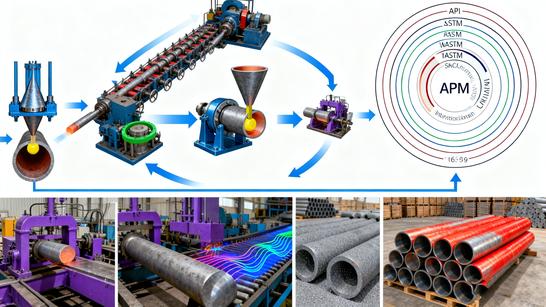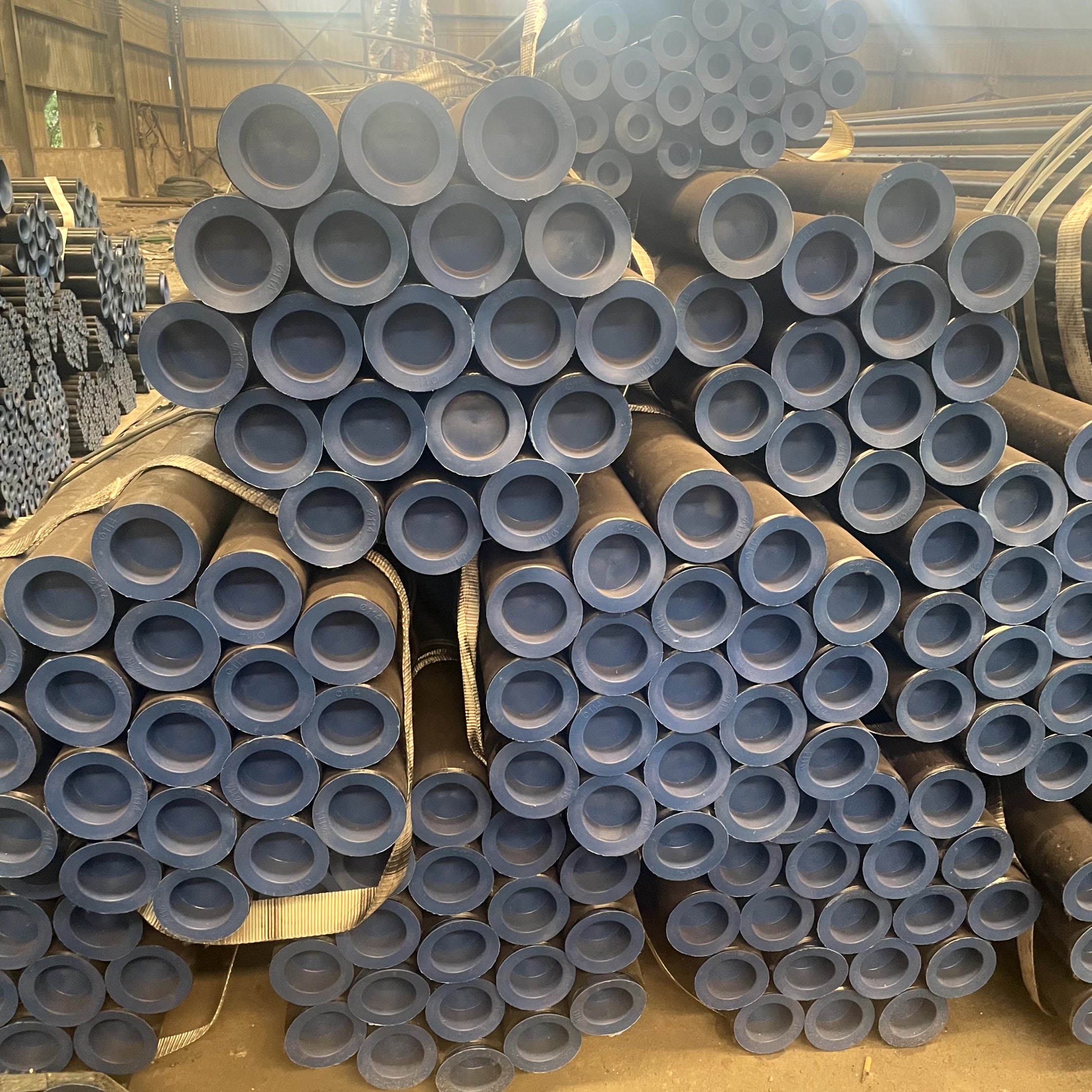1. Introduction: Why Heat Treatment Matters in Seamless Pipe Manufacturing
In seamless pipe production, heat treatment is not merely a finishing step—it is a critical process that defines the pipe’s mechanical performance, corrosion resistance, and structural integrity. From annealing to quenching and tempering, each stage contributes to achieving the desired balance of strength and ductility required by demanding industries such as oil & gas, power generation, and shipbuilding.
2. Common Heat Treatment Processes for Seamless Pipes
-
Normalizing:
Refines grain structure and improves toughness, typically applied to carbon steel pipes. -
Annealing:
Reduces internal stresses after cold working, improving machinability and elongation. -
Quenching and Tempering:
Provides high strength and hardness while maintaining sufficient ductility for high-pressure applications. -
Solution Treatment (for Stainless Steel):
Restores corrosion resistance by dissolving carbides and homogenizing alloy elements.
Each of these processes must be precisely controlled to avoid over-heating, decarburization, or distortion that could compromise pipe performance.
3. Quality Control and Inspection Procedures
Quality assurance in seamless pipe manufacturing is a multi-stage process that begins with raw material inspection and continues through every production phase.
Key stages include:
-
Chemical Composition Testing: Ensures the material meets ASTM, EN, or JIS standards.
-
Dimensional Inspection: Verifies outer diameter, wall thickness, and roundness.
-
NDT Methods: Ultrasonic and eddy current testing detect internal or surface flaws.
-
Mechanical Property Testing: Tensile, impact, and hardness tests verify strength and toughness.
-
Hydrostatic Testing: Confirms pipe pressure resistance and leak tightness.
4. International Standards and Certifications
Reputable manufacturers align their processes with global standards such as:
-
ASTM A106 / A53 (Carbon Steel Seamless Pipes)
-
EN 10216-5 (Stainless Steel)
-
API 5L (Oil & Gas Line Pipes)
-
ISO 9001 / PED / DNV Certification for quality system compliance.
These certifications not only demonstrate production capability but also reassure buyers of consistent performance and traceability.
5. Ensuring Long-Term Performance in Service
Heat-treated and properly inspected seamless pipes deliver:
-
Superior strength-to-weight ratio
-
Enhanced fatigue and corrosion resistance
-
Stable mechanical performance under temperature variations
-
Extended service life, even under cyclic pressure conditions
6. Conclusion
In today’s competitive market, the integrity of seamless steel pipes depends heavily on rigorous heat treatment and quality control. Suppliers who maintain high-level inspection systems and modern thermal processing equipment are best positioned to deliver reliable products that meet international specifications and customer expectations.





